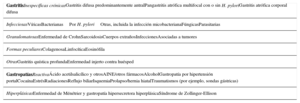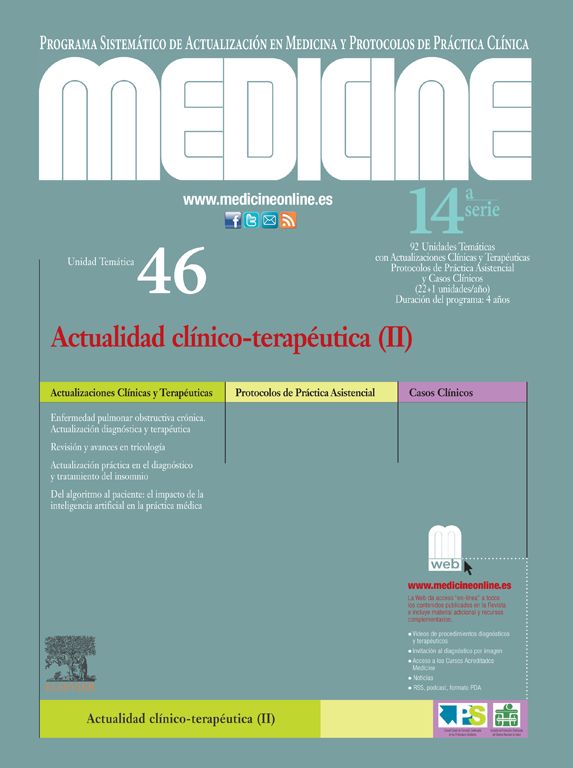No existe una definición consensuada de la gastritis, el concepto más aceptado es aquel que la define como una inflamación microscópica de la mucosa gástrica. Desde el punto de vista clínico, no existe correlación entre la existencia de gastritis y la aparición de clínica digestiva y/o alteraciones en la endoscopia. Las gastritis se suelen dividir según su etiopatogenia. Las causas más frecuentes de gastritis son la infección por Helicobacter pylori y la secundaria a la toma de antiinflamatorios no esteroideos (AINE). Los AINE son una de las medicaciones más recetadas en el mundo por su efecto antiinflamatorio y analgésico, pero no están exentos de efectos secundarios tanto gastrointestinales como cardiovasculares. Los AINE dañan tanto el tracto digestivo superior como el inferior. Los pacientes con riesgo gastrointestinal tienen que buscar aternativas a los AINE o modificar los factores de riesgo. Si tienen que tomar AINE lo tienen que hacer asociado a gastroprotectores y/o utilizar inhibidores selectivos de la ciclooxigenasa 2 (COX-2).
Palabras clave
Nowadays, there is no agreed about the definition of gastritis, the most used definition is the one that describes gastritis like microscopic inflammation of gastric mucosa. There is no relationship between the presence of gastritis and the appearance of gastric symptoms or endoscopic lesions. The most frequent causes of gastritis are the gastric infection with Helicobacter pylori and the antiinflammatory use. Non-steroidal anti-inflammatory drugs (NSAIDs) are one of the most widely prescribed medication in the world. Their main benefit derives from their anti-inflammatory and analgesic effect, but the use of these agents is not innocuous since they mainly increase the risk of gastrointestinal (GI) and cardiovascular complications compared with non-NSAID users. NSAIDs users at-risk should be considered for alternatives to NSAID therapy and modifications of risk factors. If NSAID therapy is required, patients at risk will need prevention strategies including cotherapy of NSAID with gastroprotectants (PPI or misoprostol) or the prescription of COX-2 selective inhibitors.
Keywords
Identifíquese
¿Aún no es suscriptor de la revista?
Comprar el acceso al artículo
Comprando el artículo el pdf del mismo podrá ser descargado
Teléfono para incidencias
De lunes a viernes de 9h a 18h (GMT+1) excepto los meses de julio y agosto que será de 9 a 15h






